Today I'd like to show you what the citadel of Sighișoara has to offer, bedsides the medieval festival. It has plenty of historic monuments to show you, among which many are several centuries old.
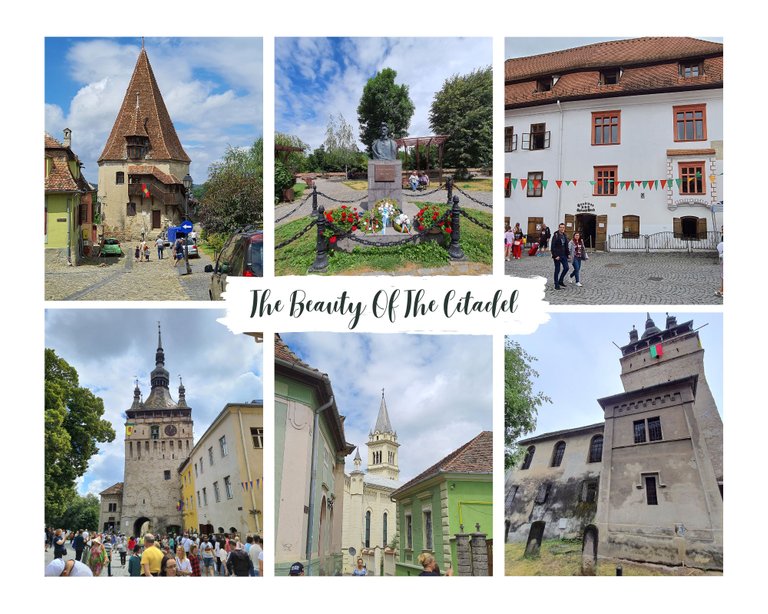
There are several entry points to the citadel, depending on what direction one is coming from. None of them is an easy walk as you have to climb a hill.
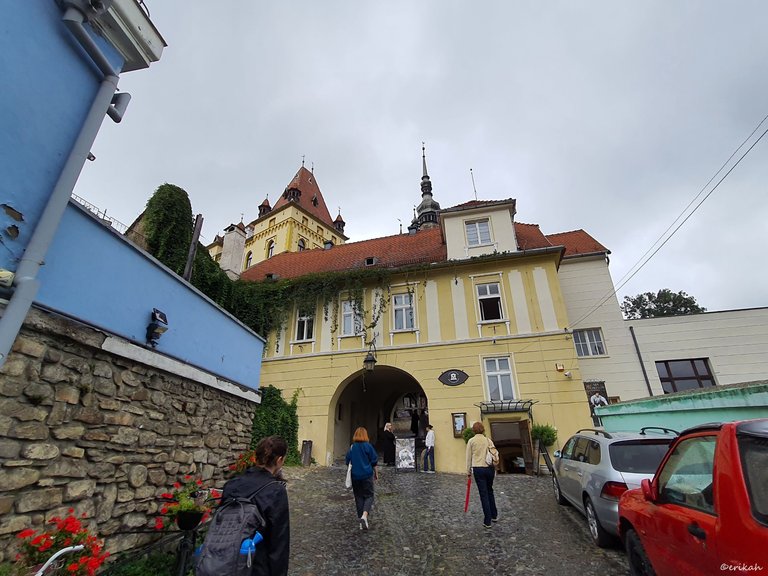
This is the entrance we used and even though the road here has some turns, it's still not so steep.
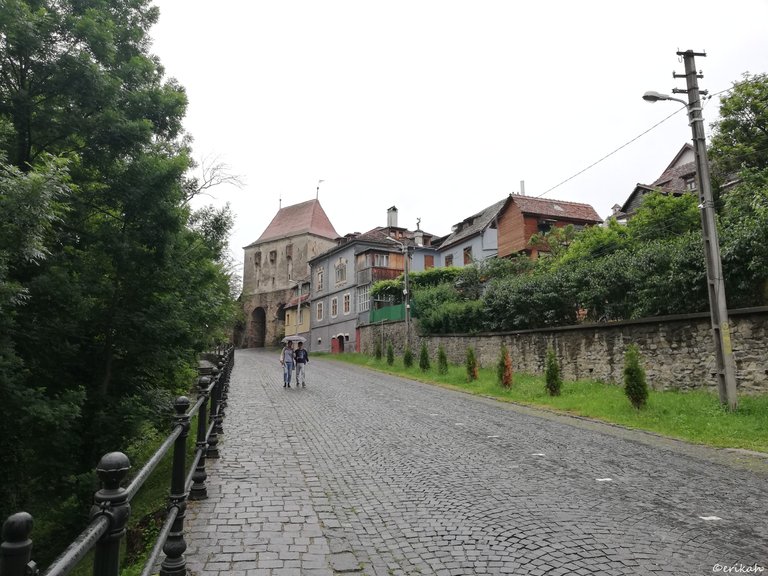
This is a photo I took two years ago. This was a different road up to the citadel, a much more steeper. I'm not sure how many entrances are there, but I suppose some of the bastions, if not all have entrance and exit points.
This year we entered through the Clock Tower, which is hardly visible on the first photo, you can only spot the top of it, if you pay attention.

But here is another view, from inside, where you can see why it called Clock Tower.
In every fortification system there is one fortress that dominates the others: the master-tower. The Clock Tower of Sighișoara (Romanian: Turnul cu Ceas, German: Stundturm) is the main entry point to the citadel, opposite guarded by Tailors' Tower. With its 64 meters of height, the tower is visible from almost every corner of the city from Mures County, its purpose was to defend the main gate of the citadel and also served as the town hall until 1556. Now It's considered one of the most expressive clock tower in the whole Transylvania. source
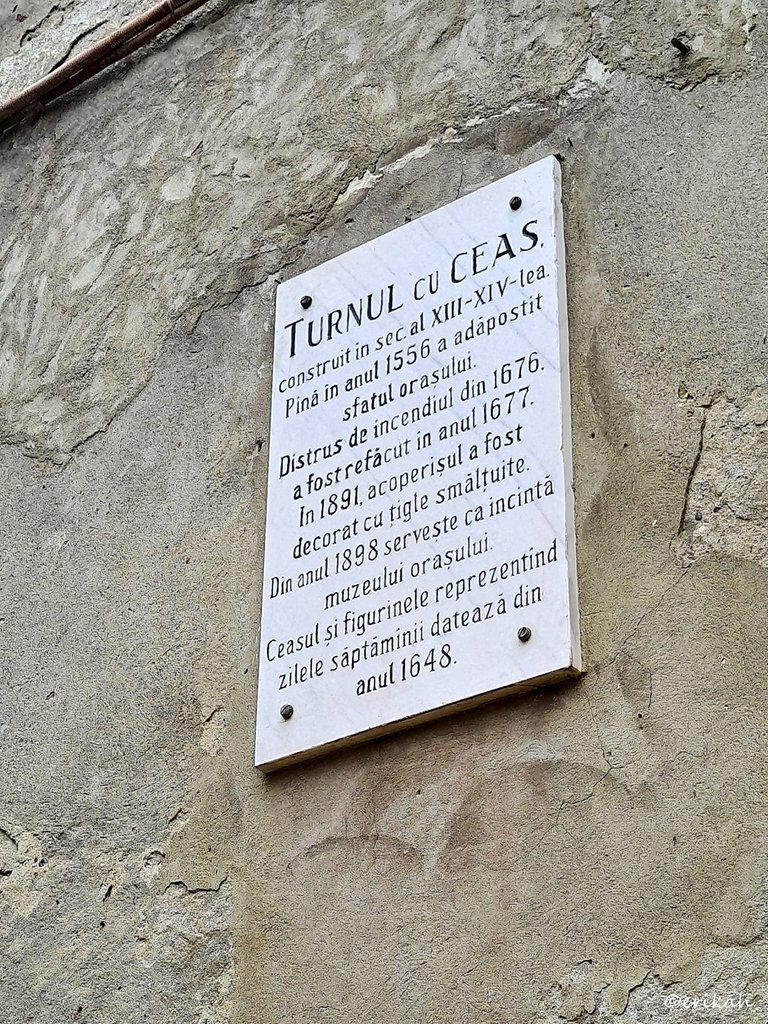
The clock tower
built in the 13th - 14th century.
Until 1556, it housed the city council.
Destroyed by the fire in 1676, it was rebuilt in 1677.
In 1891 the roof was decorated with glazed tiles.
Since 1898, it serves as the premises of the city museum.
The clock and figurines representing the days of the week dates back t 1648. [translation of the marble plaque]
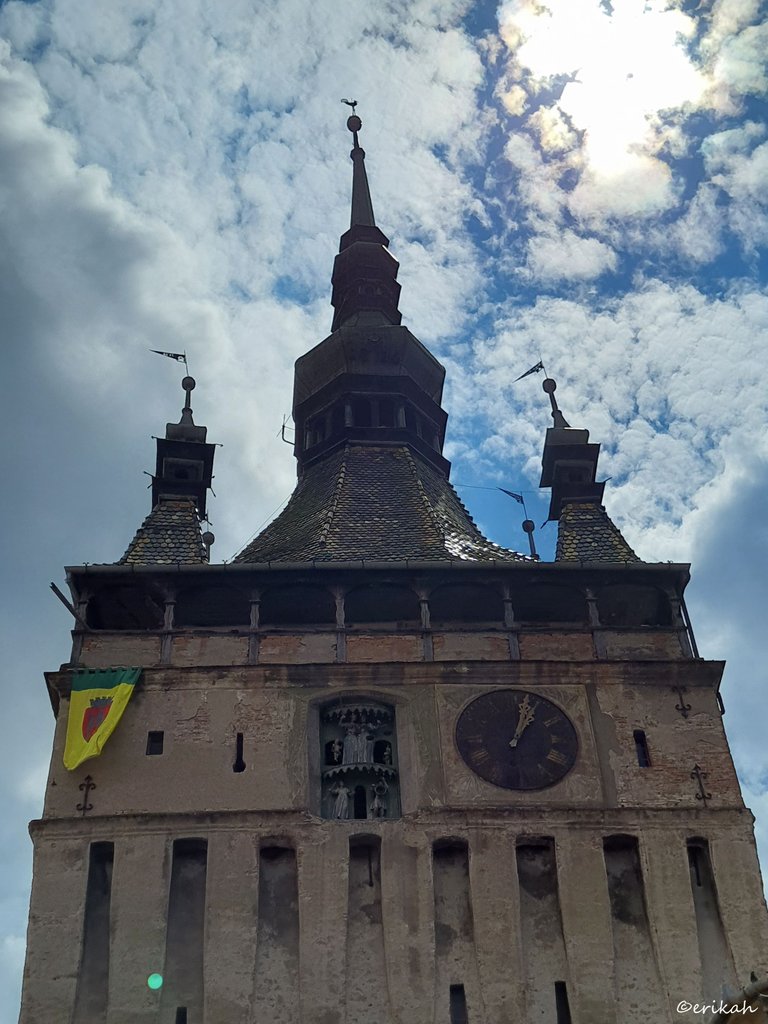
I tried to take a decent photo of the tower, but zooming in is not always successful, plus the light wasn't perfect either, but you can see the clock and the figurines. You can read more about the tower here.
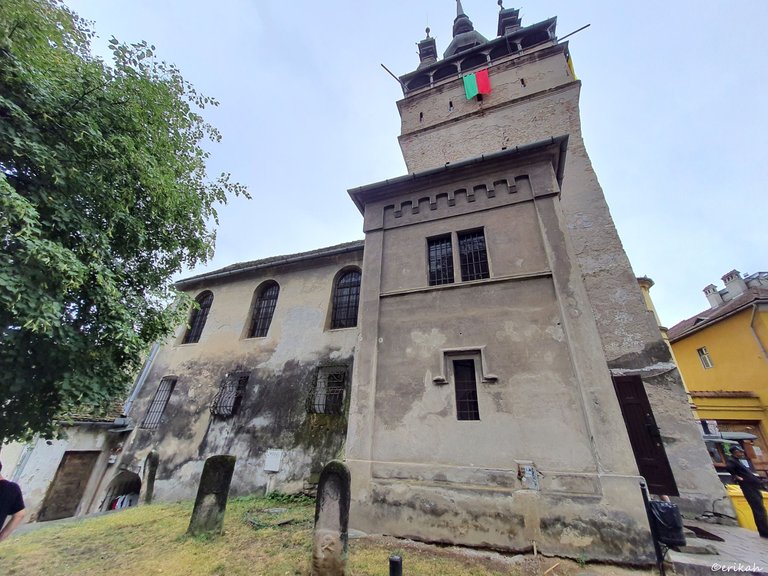
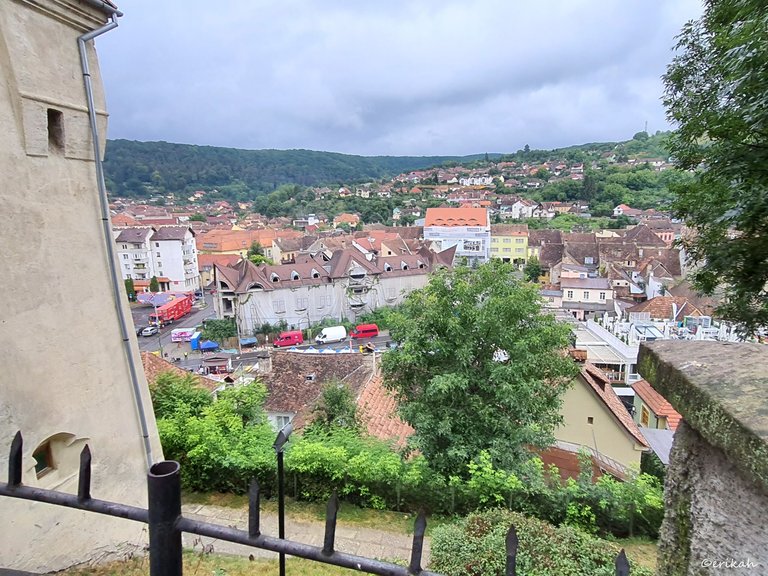
The stunning view of the city, from the citadel.
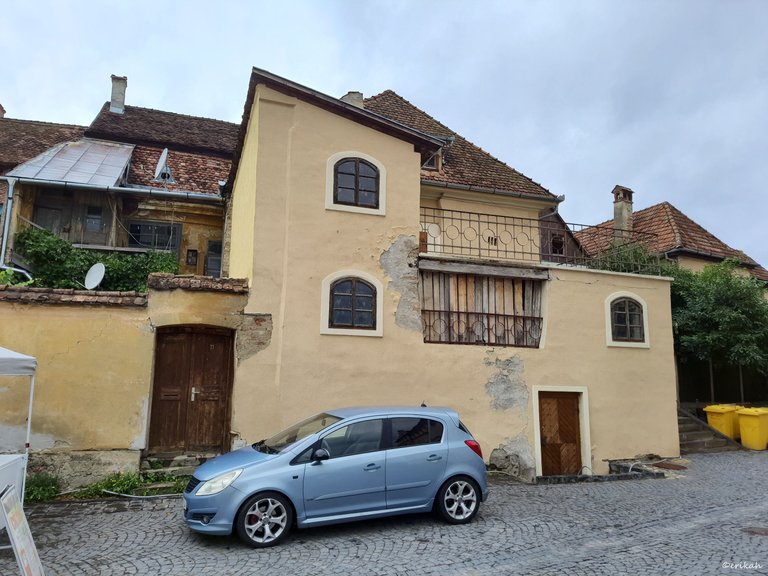
Most, if not all the houses are from another century, therefore look like this one. Old doors, old windows and quite many times in need of a good restoration.

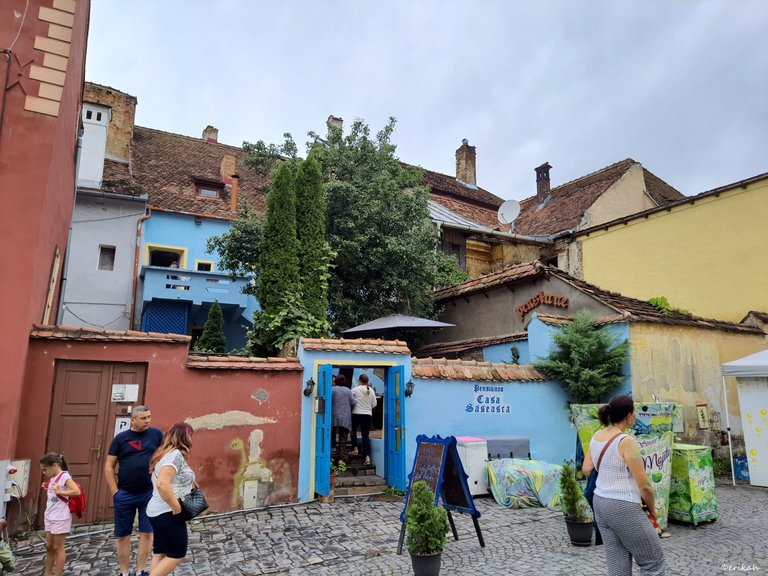
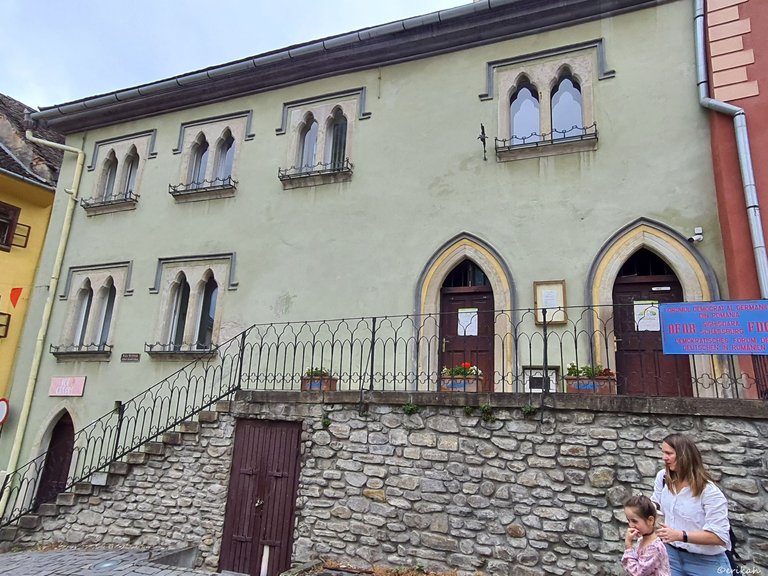
This is the house that is hosting the German Democratic Forum of Sighișoara. The shape of the doors and windows take me back to another era and remind me of a church, although I don't think it has ever been a church. However, back in those days the church had a lot more power than these days, schools were managed by the church, so it must have been a building connected to the church in my opinion.
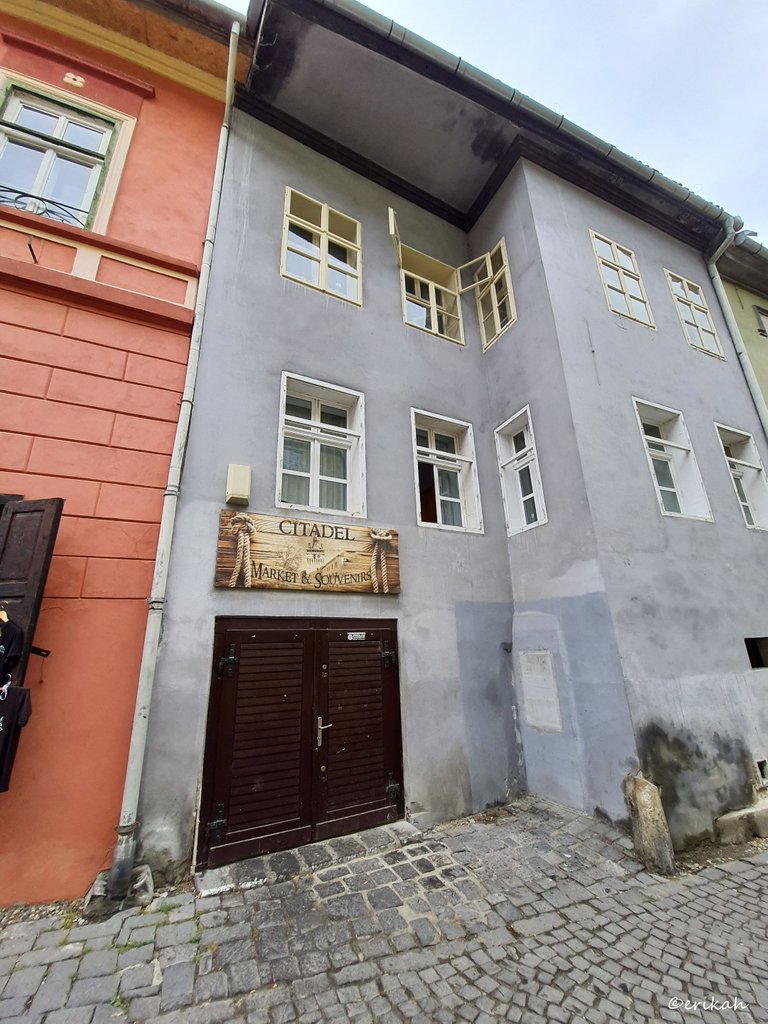
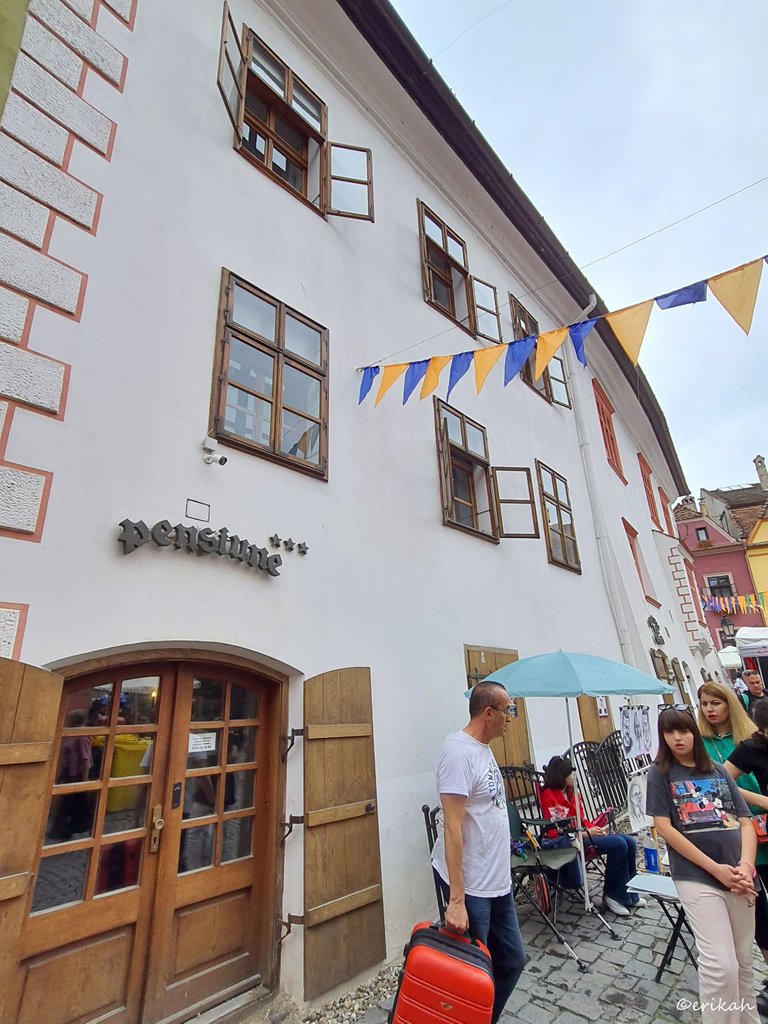
A 3 star Bed and Breakfast, for those who'd like to experience what it is like to live in such a building for a few days. I'm sure there were plenty of tourists spending the nights during the festival, here.
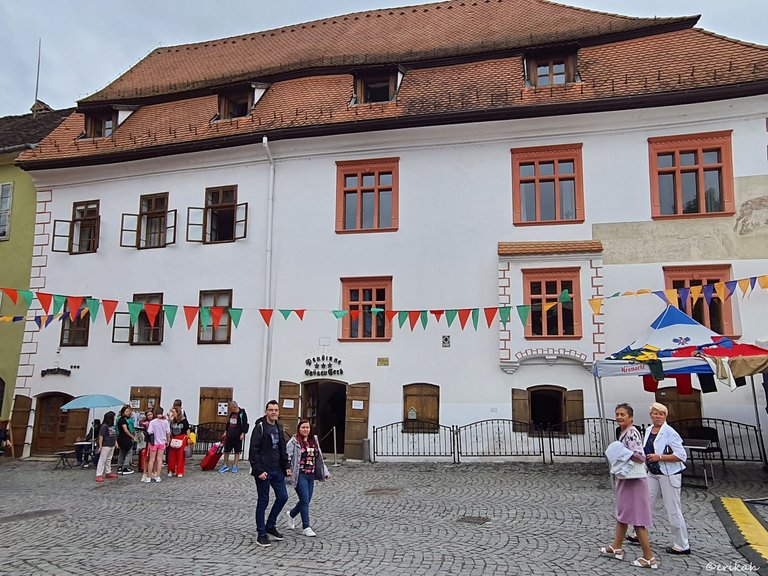
Another one, just as cute as the other, if you like the noise of the festival.
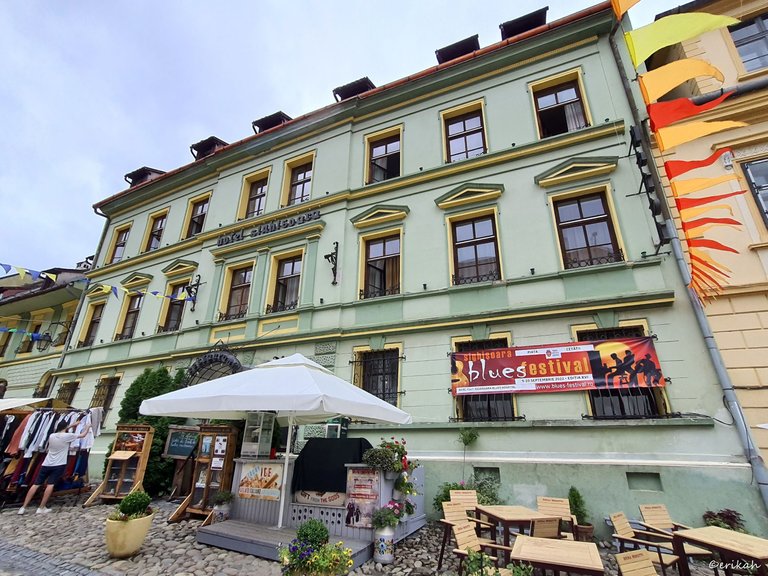
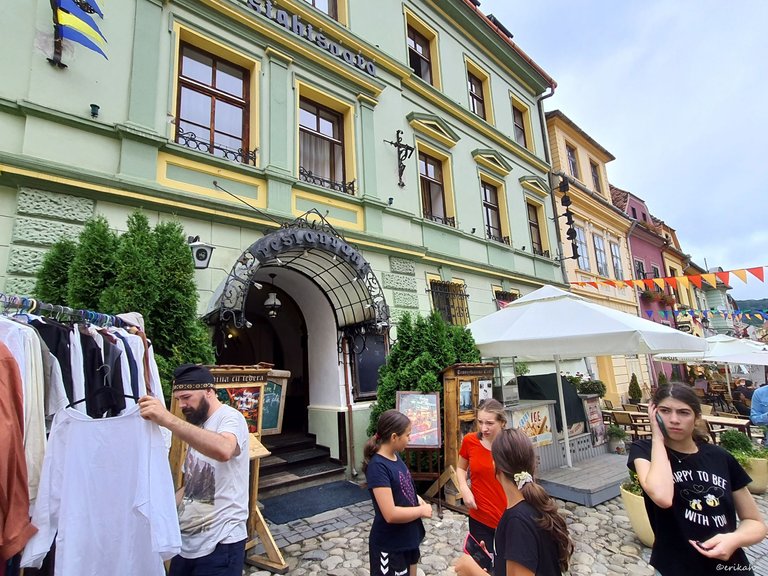
Hotel Sighișoara, if you prefer something modern or closer to our days. I haven't been inside, but here's the photo gallery from booking.com, to what it looks like inside. It's a mix of old feeling brought to new standards. It's definitely a pleasure to stay in such a hotel.
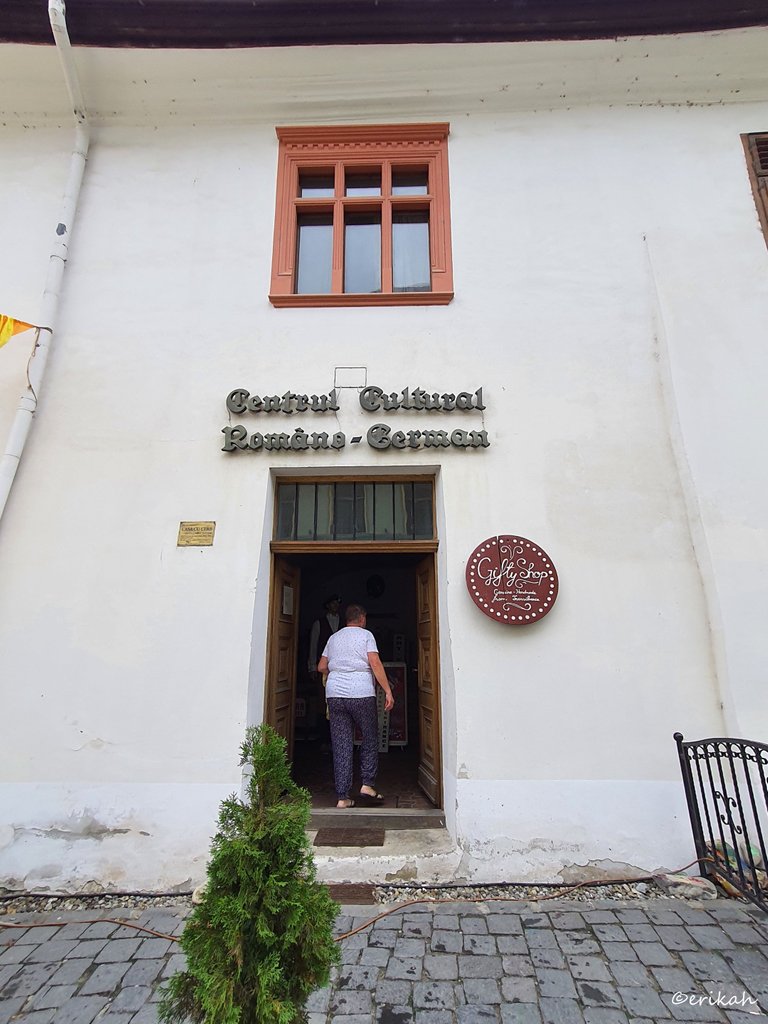
The base of the Romanian German cultural center, also in a nice old building inside the citadel, with a gift shop at the ground level.
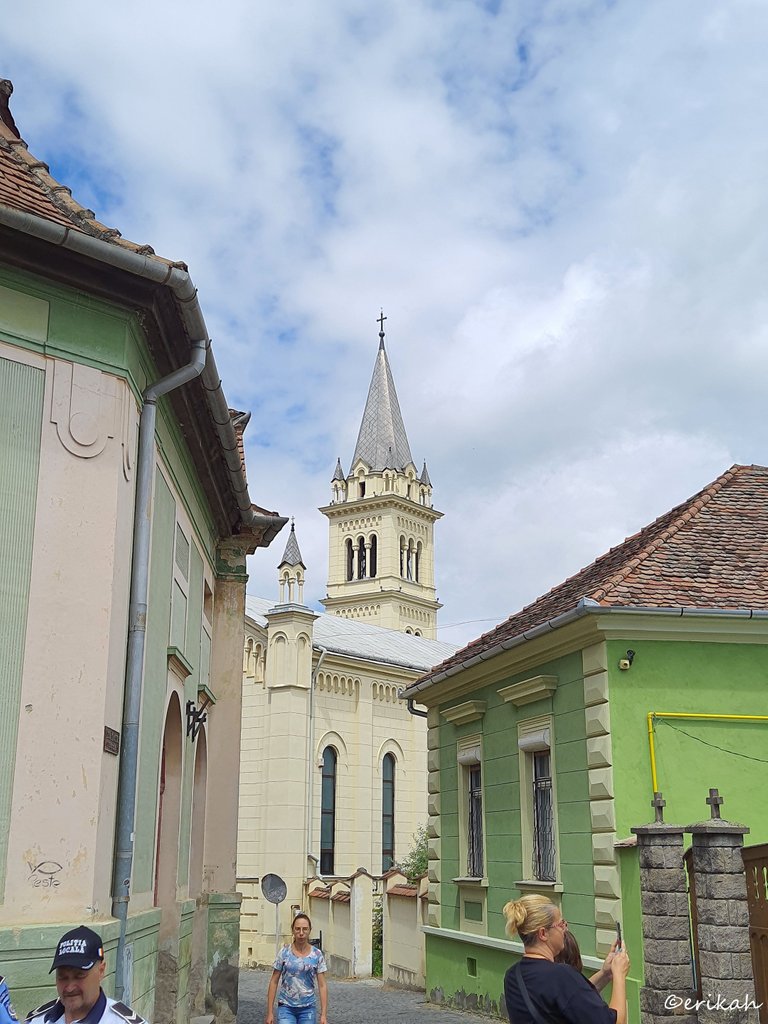
Another interesting tourist attraction you should visit, once you're there is the Roman Catholic church.
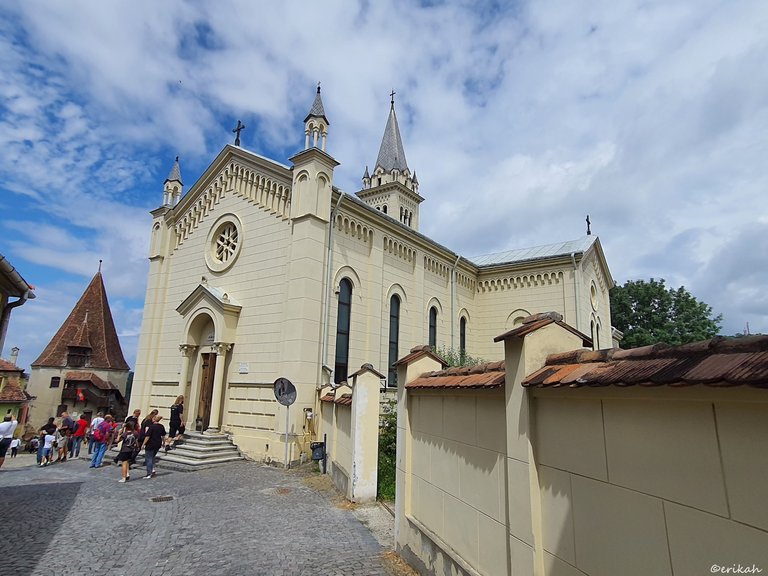
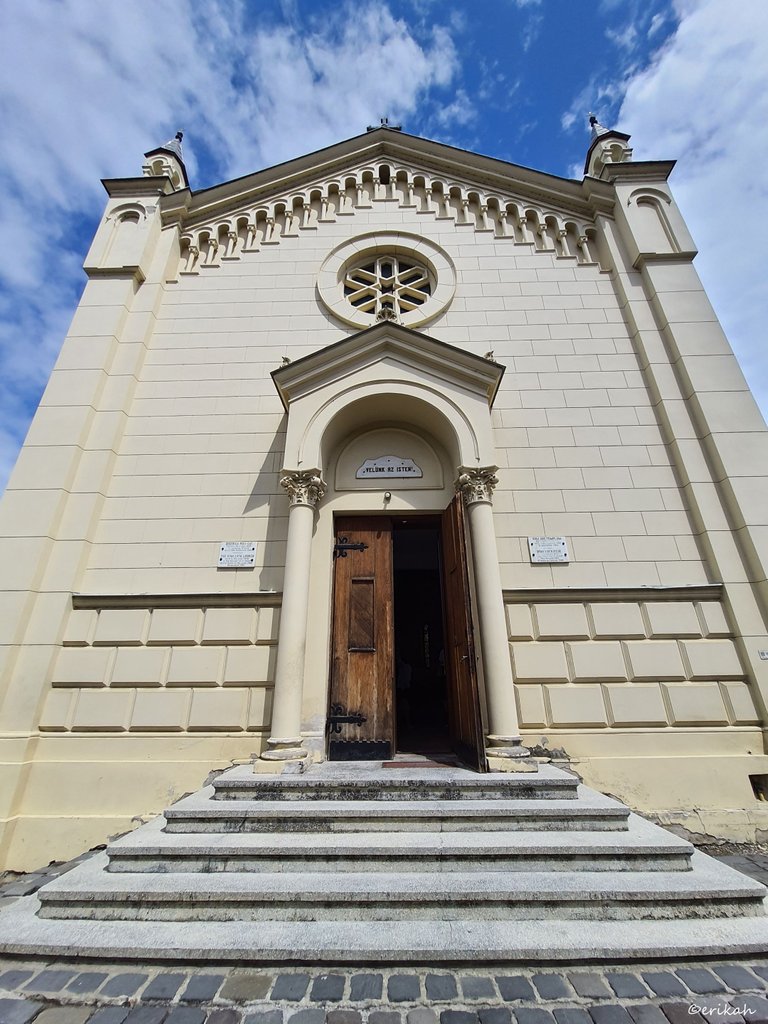
According tho this source, the construction of the church started in 1895 and was inaugurated one year later.
In 1983, as a result of a short circuit, the ceiling burned down and the interior was badly damaged, which was reconstructed with painstaking work. source
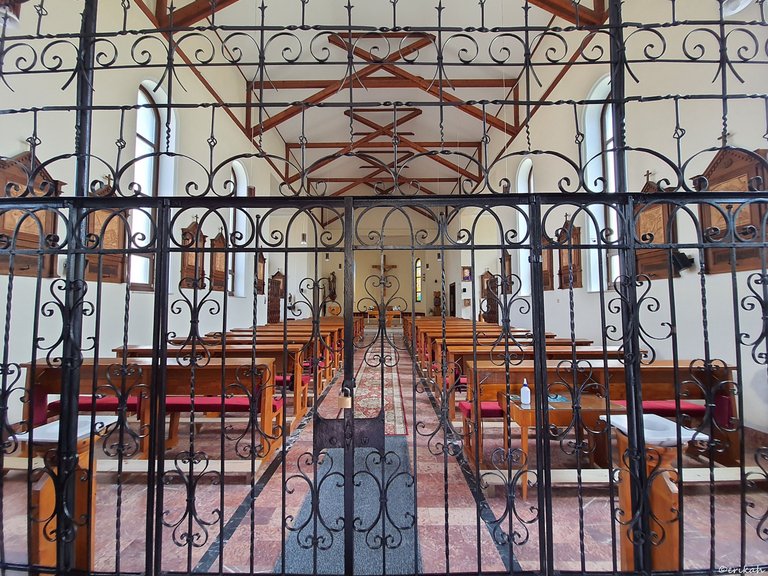
Catholic churches are open all day, entrance is free, but you can only visit the praying area, the rest is closed.
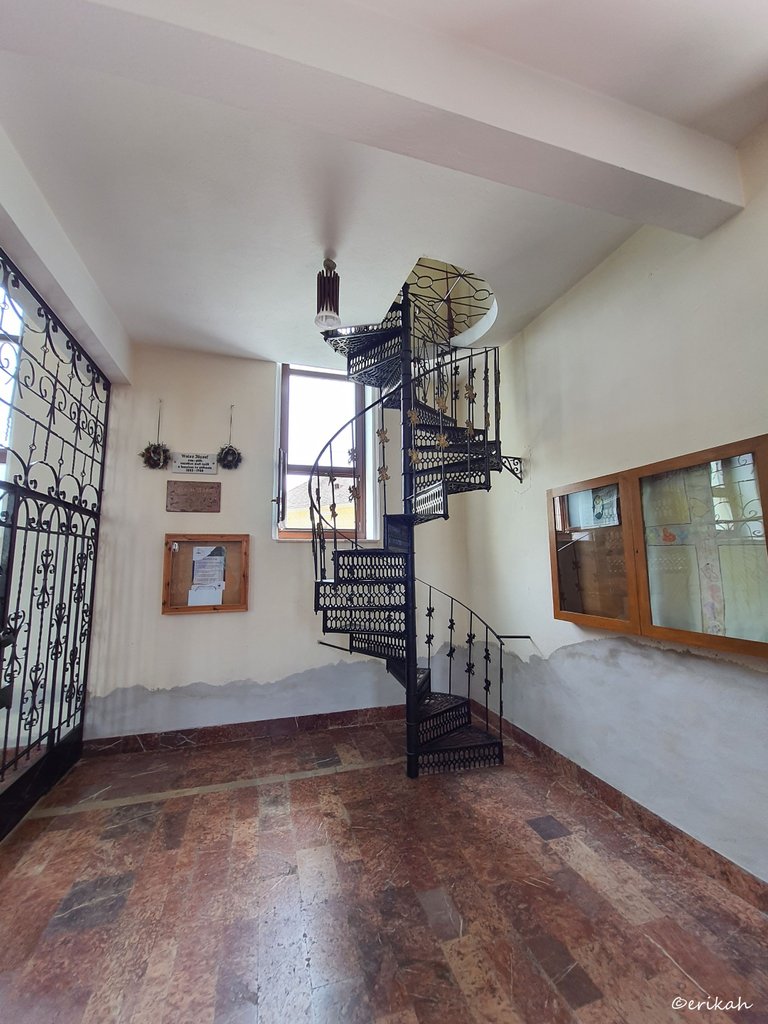
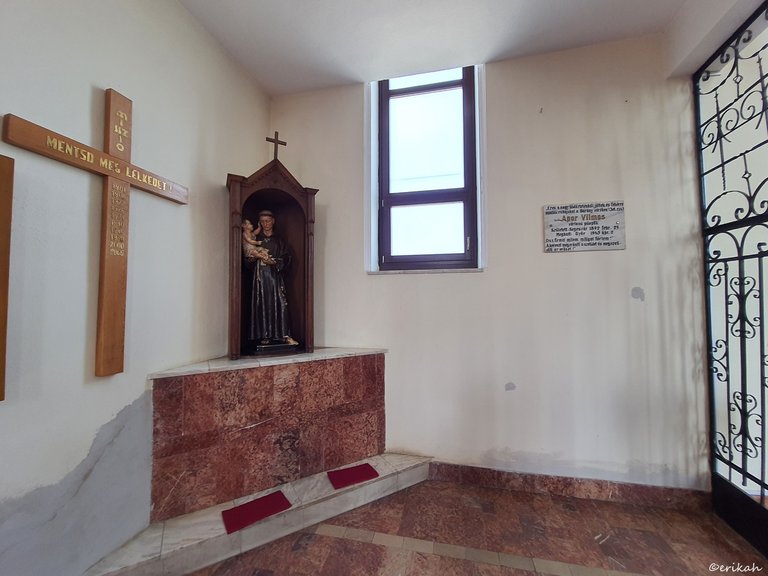
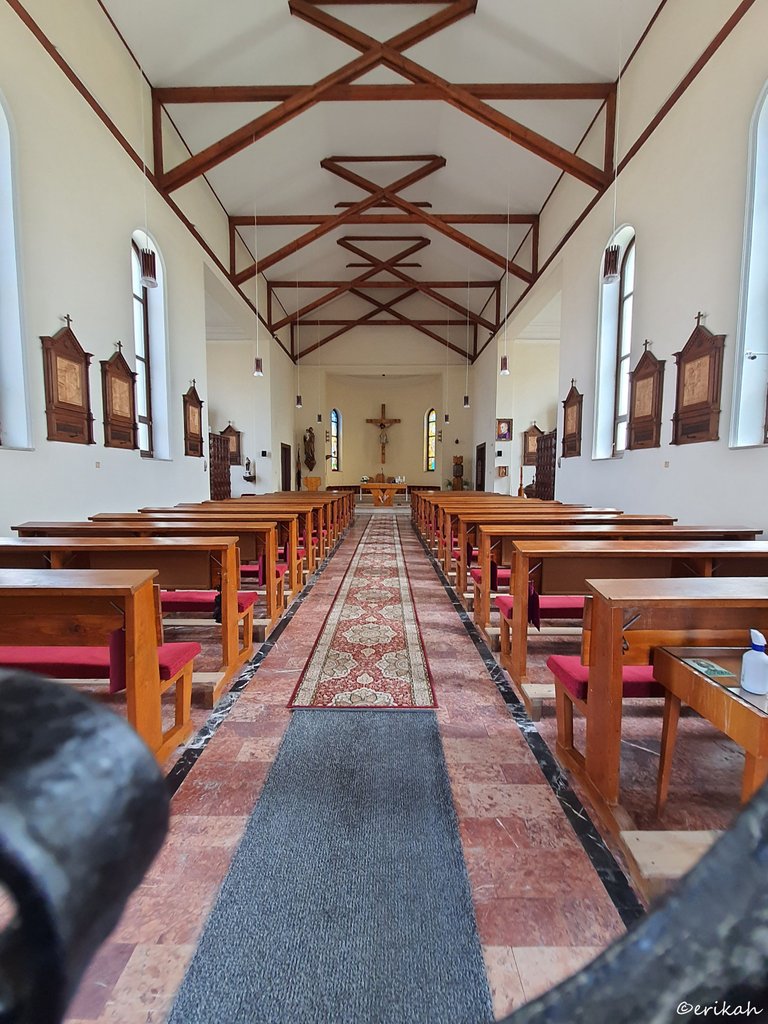
I must admit, compared to other catholic churches I've seen so far, this one is the simplest of all. No fresco on the wall, no saints.
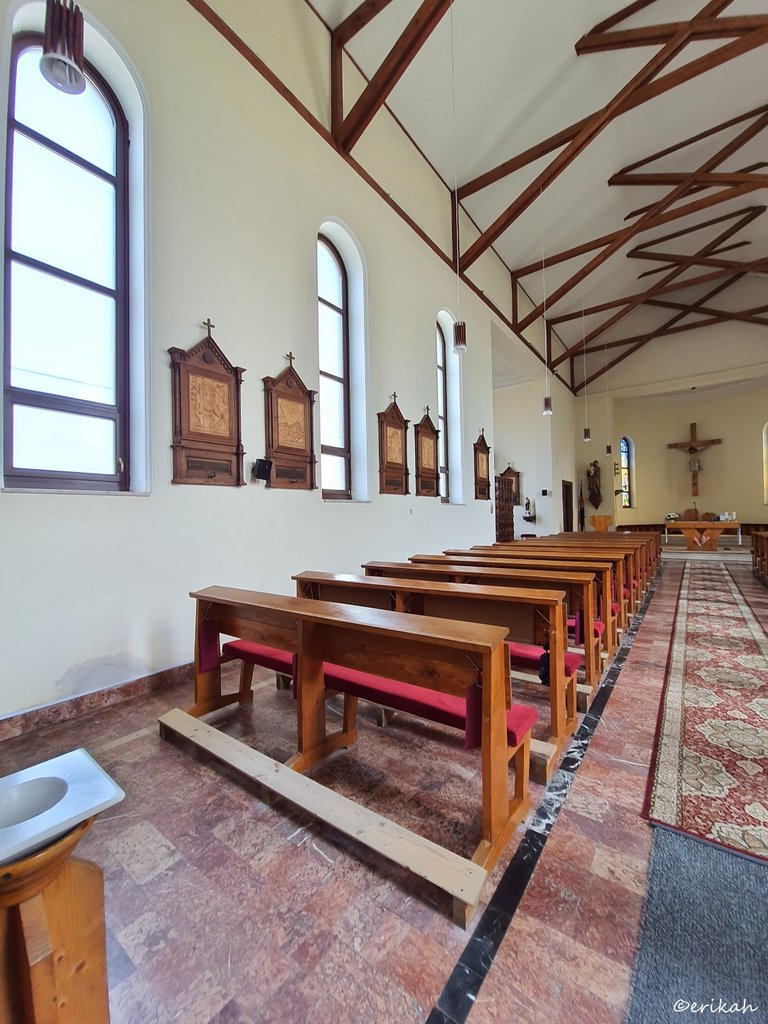
Those wooden decorations however looked great. I suppose there are decorated with scenes from the bible, below with verses from the bible.

Left to the church there's the statue of Sándor Petőfi, the Hungarian poet and liberal revolutionary. He had a very short life and presumably died at the age of 26, in the battle of Sighișoara.

This is the Shoemaker's Tower.
The Shoemakers' Tower is documented for the first time in 1594. In its current form, it is one of the recent towers, betraying some influences of Baroque architecture. It was rebuilt in 1650. Of relatively small vertical dimensions, the tower follows a hexagonal shape with unequal sides. The roof has the shape of a long tile helmet, from the mass of which a small observation tower detaches to the south, towards the interior of the fortress.
The fire of 1676 completely destroyed it, and it was rebuilt from the ground up and acquired its current appearance with baroque influences in 1681. Two important inscriptions were discovered inside it, kept today in the collection of the Museum of History. In the first epigraphic document appears the first coat of arms of the city and above it is written the motto "Nomen Domini Turiis Fortissima" ("The name of the Lord the strongest tower"), and on the second is written "Under the reign of the illustrious and pre-illuminated prince G. Rakocyi II, by the mercy of God, prince of Transylvania and comite of the Székelys" source
The flag you see there it's most likely a replica of the shoemaker's flag from those days.
Looking back to what I saw here, there's so much history compressed in this tiny place. Each building has its own history but because we're talking about more than 700 years of history, you can imagine how many stories are there to tell. It was really like a walk back to medieval times. If you're in the neighborhood, this place is a must.

